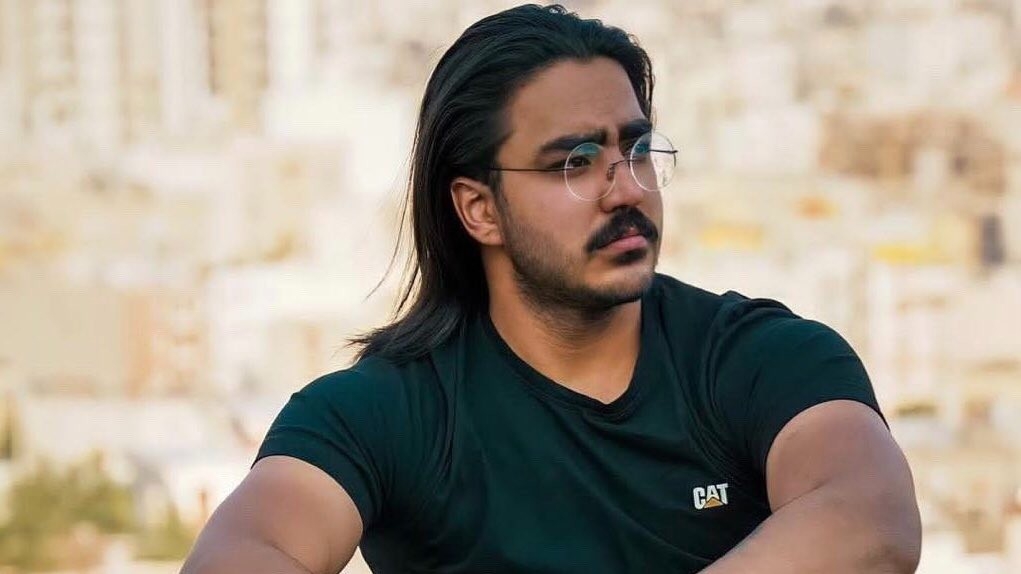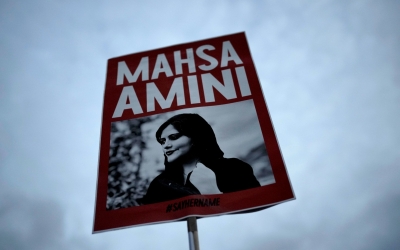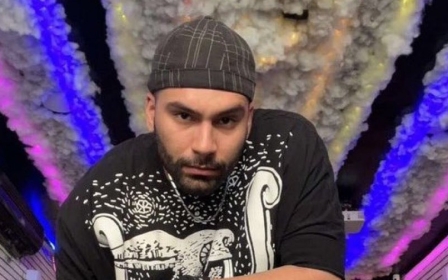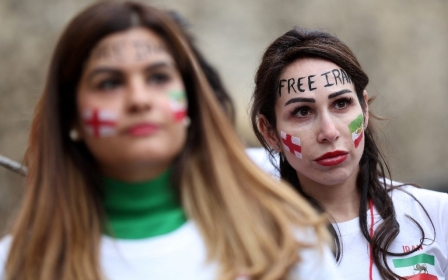Iran publicly executes second protester after 'a show trial'

Iran carried out the death penalty against an anti-government protester on Monday in the second execution since the protest movement began three months ago.
According to a statement by the Iranian judiciary, Majidreza Rahnavard, 23, had been sentenced to death by a court in Mashhad city after allegedly attacking security forces on 26 November with a knife, killing officers Hossein Zeinalzadeh and Daniyal Rezazadeh with stabs to the neck and body, and wounding four other people. It described the incident as "a terrorist attack".
'The public execution of a young protester, 23 days after his arrest, is another serious crime committed by the Islamic Republic's leaders'
- Mahmood Amiry-Moghaddam, Iran Human Rights
Mizan, the judiciary's Mizan news agency, published images of Rahnavard's execution, showing a man with his hands tied behind his back hanging from a rope attached to a crane. The execution took place before dawn and there was no sign of any significant number of people witnessing it.
The execution is linked to the mass protests that have swept the country after Mahsa Amini, a 22-year-old Kurdish woman, died in police custody after being arrested in September for allegedly wearing her mandatory hijab "inappropriately".
Rahnavard's execution comes days after the execution of Mohsen Shekari, a prisoner convicted over the women-led protests.
Shekari, 23, was hanged on Thursday after a court convicted him for participating in protests and committing violence.
Rights groups have condemned the two executions as politically motivated.
The director of Oslo-based group Iran Human Rights, Mahmood Amiry-Moghaddam, said Rahnavard "was sentenced to death based on coerced confessions after a grossly unfair process and a show trial".
"The public execution of a young protester, 23 days after his arrest, is another serious crime committed by the Islamic Republic's leaders and a significant escalation of the level of violence against protesters," he told AFP.
Iran calls the protests "riots" and says they have been encouraged by its foreign foes.
Iran has executed more than 500 people since the start of 2022, according to Iran Human Rights, the highest toll in five years. In 2021, authorities executed 333 people, the group said last week.
So far, six people have been sentenced to death over the recent protests in trials that have not allowed access to lawyers, according to IHR.
There are currently 26 people, including three minors, awaiting court rulings in protest-related cases that could see them hanged, it added.
EU sanctions
Meanwhile, EU ministers meeting in Brussels on Monday were expected to impose fresh sanctions on Iran over the crackdown on the protesters and its supply of drones to Russia used in the war on Ukraine.
EU foreign policy chief Josep Borrell said the bloc was going to "approve a very, very tough package of sanctions".
"These executions are a blatant attempt to intimidate people, not for committing crimes but just for taking their opinions to the streets, just for wanting to live in freedom," German Foreign Minister Annalena Baerbock said.
"With this package of sanctions, we have particularly targeted those who are responsible for these executions, who are responsible for this violence against innocent people.
"These are in particular the Revolutionary Guards, but these are also those who are trying to intimidate or further punish people with forcibly made videos."
Iran is already the world's most prolific user of the death penalty after China, Amnesty International says.
Amnesty International on Saturday warned that the lives of two more young men sentenced to death - Mahan Sadrat and Sahand Nourmohammadzadeh - were both at imminent risk.
Before the second execution was announced, Oscar-winning Iranian film director Asghar Farhadi on his Instagram account urged the authorities to halt the executions.
"Killing and executing defenceless young people and the oppressed will only bring you more anger and more hate," he said.
Middle East Eye propose une couverture et une analyse indépendantes et incomparables du Moyen-Orient, de l’Afrique du Nord et d’autres régions du monde. Pour en savoir plus sur la reprise de ce contenu et les frais qui s’appliquent, veuillez remplir ce formulaire [en anglais]. Pour en savoir plus sur MEE, cliquez ici [en anglais].





